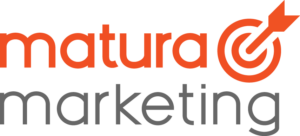Before the coronavirus pandemic, digital marketing was driving more than 20% of all senior housing and care inquiries. Today, it is driving upwards of 50% of more. This means in order to be competitive, your digital marketing program must be performing on all fronts.
Whether or not you are spending $500 or $50,000 on Google AdWords, search engine marketing will be a key driver of marketing success in senior living. In the most simplistic terms, marketing performance starts and ends with your website. The first experience prospective residents and their caregivers and families have with a senior living community is on your website. Thus, a visually stimulating, easy-to-navigate, informative, engaging, educational and properly optimized website is the cornerstone of senior living marketing, especially during the ongoing pandemic.
2021 Website Design
As the “front door” to your brand, an impressive website aesthetic and design is important, but senior care providers would be well advised to prioritize features that meet Google’s search engine quality guidelines to make sure the website does what it is meant to do best: rank high and generate leads. Incorporating features that search engine algorithms focus on when determining which websites to rank will ensure your website appears in search results when prospects are exploring senior living on the Internet. At the end of the day, a sleek and modern website design will help you establish a professional image, but an optimized website drives performance.
2021 Website Strategy
If you are refreshing your website strategy in 2021, make sure it meets the top SEO performance criteria:
1. Conversion Points
Easy to find conversion points — such as a lead capture form for scheduling a tour – should be front and center, preferably “above the fold,” which is the viewing area that appears on the monitor on the top half of the home page.
2. Responsive Design
Responsive design technology to allow the website to scale to the user’s viewing device. We can expect 70% or more of adult children influencers to be viewing your website on a mobile device so use of a responsive design theme is a key factor in performance.
3. Content Organization
Changes in the way search engines crawl websites have prompted a shift toward the way content is organized on websites. Whereas in years past, companies would blog on a range of random topics, often unrelated, Google now looks for sites with topic continuity and linking structure, which helps crawlers identify you as an expert in senior living. The emergence of the pillar page is the foundation of this new organizational structure, which comprises a vast digital library of related, expert content built around topic clusters.
4. Content Utility
The days of blogging at whim—from National Donut Day to downsizing—are coming to an end. Today, content that ranks higher in search is expected to sell less and solve more. The expert content favored by search engines today informs and educates, answers a question or solves a problem. In fact, Google has stated that Expertise, Authoritativeness and Trustworthiness – also known as E.A.T – is among the top factors for ranking a website in search.
5. Content Offers
The primary goal of content to is generate a lead that kicks off some form of lead nurturing campaign. Prospects that are just beginning the discovery process may not be ready to tour your community, so content is used to start building a relationship as early in the customer journey as possible to gain a competitive advantage. Thus, content offers (i.e., pricing download, brochure download, eBook) serve an important role, dutifully capturing prospects’ attention with the promise of useful tips, techniques and resources that senior living prospects need.
6. Content Automation
Like clockwork, marketing automation streamlines the ongoing delivery of content to prospects throughout the senior living purchase journey. If you have ever submitted your email address to a website, chances are you are well into an email drip campaign that is hoping to convert you to a customer. Using automation, content strategy and email can become hyper-targeted to specific personas (audience segments) using messaging that is relevant and timely, and customized by audience motivations in order to influence prospects wherever they might be in the senior living customer journey. Automating this function gives providers a competitive edge and helps shorten the length of sale.
7. Content Format
Marketers struggle to create content that stands out in some way and break through a sea of other content “clutter.” It can be difficult to identify topics that have not already been covered by other providers, so the pressure to create something better and more engaging prevails.
Video helps differentiate your community and can help set you apart from your competitors while showcasing your best features and amenities. Video testimonials help build trust. If properly optimizing on the site, Google favors those sites that feature different types of content, including video and infographics.
8. User Experience
Google’s ongoing core updates makes adjustments to its search algorithms at mind warping speed. The upcoming 2021 core web vitals update may impact how your site ranks in search based on more technical aspects like interactivity, visual stability, safety and security. According to Google, these new signals will be used to assess overall page experience and to cast a final vote in deciding whether a page is worth ranking.
Senior Living Website Design
A sleek, conversion-centric and professional design is a must-have for any senior living community, but content strategy, organization and user experience will become even more important aspects for ranking in 2021. If you are curious if your website stands up to Google’s quality standards, Google recently updated its search quality evaluator guidelines.
